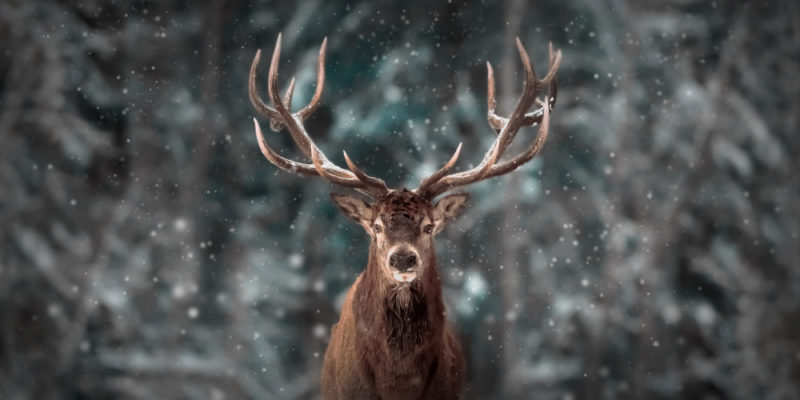We explain what the kingdoms of life are and what their characteristics are. Also, how they are classified and some examples.
What are the Biological Kingdoms of life?
The kingdoms of life, also known as the six kingdoms, are the classification and ordering of all known living beings (taxonomy), accepted and managed by the different sciences and knowledge for the systematic study and understanding of life as we understand it.
The kingdoms are determined from the similarities and differences that their biological and biochemical functions present, such as anatomy, nutrition, reproduction, behavior, etc., so that each of these categories, called “kingdoms”, corresponds to a profile. of characteristics common to all members of the group. They will also allow distinguishing them from those belonging to the other kingdoms.
There are six kingdoms of life, namely: the plant kingdom ( Plantae ), the animal kingdom ( Animalia ), the protist kingdom, the archaea kingdom ( archaea ), and the fungal kingdom ( fungi ).
Biological Kingdoms Features :
Source

The classification of life into kingdoms comes from ancient times when Aristotle proposed that life existed in two large groups: vegetable and animal. The former were static and photosynthetic, the latter mobile and breathe.
The Protist kingdom was incorporated in the 19th century, thanks to the German naturalist Ernst Haeckel, and five different kingdoms were established in 1969, by Robert Whittaker, adding the fungi and moneras (prokaryotes).
This last model, with some later adjustments, will remain in force until 1977, when the American microbiologist Karl Woese, aided by advances in genetics, discovered the kingdom of archaea.
From then on, a new organization model was proposed, with three large Domains: Bacteria, Archea, and Eukarya, from which six kingdoms would later emerge: Animalia, Plantae, archaea, fungi, protist, and bacteria.
However, there is no definite consensus regarding the definitive criterion. Some contemporary models propose up to seven different realms and two different super realms.
Debate
The widely accepted model distinguishes six kingdoms of life, namely: animals, plants, fungi, protists, bacteria, and archaea.
The difficulty to establish a simple criterion is due to the fact that there are phylogenetic (evolutionary) relationships between the different kingdoms, since some gave rise to others and therefore share some essential characteristics, but they do not constitute the same type of life forms.
Super realms

Most of the current classifications of life accept as a starting point in the organization the existence of two super-kingdoms: prokaryotes and eukaryotes. They are distinguished from each other based on the absence or presence of a cell nucleus in the organisms or in the cells that comprise them.
Thus, prokaryotes (prokaryotes) are generally unicellular living beings, whose DNA is dispersed inside the cell, without a defined nucleus. In contrast, eukaryotes ( Eukaryota ) are living beings whose cells (both unicellular and complex) have a true nucleus where genetic material is stored.
Once the superkingdoms have been established, the organization can be carried out into six recognized kingdoms but distinguishing between prokaryotes (2) and eukaryotes (4).
Prokaryotic kingdoms

Only two kingdoms are part of the prokaryotic superkingdom: archaea and bacteria.
- The Bacteria Kingdom. They are the most abundant beings on the planet, single-celled, with a peptidoglycan cell wall and mostly aerobic heterotrophs (they feed on the surrounding environment and require oxygen ). However, many of them are capable of photosynthesis.
- The Archaea Kingdom. Unlike bacteria, these unicellular organisms do not have peptidoglycan in their cell wall, but rather glycoproteins or other substances. They are very numerous on the planet, even in the most hostile environments. For a long time, they were considered part of the monera kingdom and were called archaebacteria until their greater resemblance to eukaryotes than to the bacterial kingdom was determined.
Eukaryotic kingdoms

There are four eukaryotic kingdoms, perhaps the best known: animals, plants, fungi, and protists.
- Kingdom Protists. The simplest eukaryotic organisms that exist are a group of protozoa, algae, and slime molds, usually single-celled. They constitute a basal group, that is, an intermediate state between prokaryotes and the other kingdoms of eukaryotes.
- Kingdom Plantae. What are commonly known as plants, they are mostly multicellular beings autotrophs, whose cell walls are cellulose and whose nutrition thanks to photosynthesis occurs, for which require chlorophyll, water, and light sun.
- Kingdom Animalia. What we ordinarily call animals: multicellular, heterotrophic beings that feed on respiration (oxygen). They have wallless cells, a nervous system, is capable of movement at will and the structural protein is collagen. Its reproduction is sexual.
- Kingdom Fungi. These heterotrophic, aerobic, and mostly multicellular beings have chitin cell walls. Its reproduction is through spores.
Examples

Here are some examples from each kingdom of life:
- The Bacteria Kingdom. Escherichia coli, a bacterium normally found in the intestinal tract of warm-blooded animals; Acidovorax avenae , a phytobacterium that affects sugar cane.
- Archaea Kingdom. Cenarchaeum symbiosium , an archa that lives in symbiosis with certain marine sponges and in cold and temperate environments; Caldiarchaeum subterraneum , a species of archaea found at the bottom of a gold mine in Japan.
- Protist kingdom. Free-living amoebae (pathogenic or not) such as Naegleria fowleri found in stagnant fresh and temperate waters; chromophyte algae capable of photosynthesis; pseudo-fungi ( pseudofungi ), molds similar in appearance to fungi.
- Kingdom Plantae. Most of the known trees, plants, and vegetables are good examples of this kingdom: from the rose trees in our garden, the pines in a forest, or the sargasso in the sea.
- Fungi kingdom. Both parasitic and decomposing fungi are valid examples: from those that can appear on the skin of runners (“athlete’s foot”) and that require treatment, to the mushrooms that we grow to eat.
- The Animalia Kingdom. The human being himself is an example of this kingdom, but also fish, birds, all mammals, and reptiles and lizards.
Differences

The differences between the six kingdoms are numerous and significant, but generally, they lie in:
- Its reproduction. Sexual or asexual, depending on whether it involves two individuals to create a new one or whether an individual can divide into two new ones.
- Your diet. Some living beings can generate their own food ( autotrophs ), while others must ingest it from the environment (for example, from decomposing organic matter) or from the assimilation of other living beings ( predators ).
- Your metabolism. While some living beings obtain energy from photosynthesis, that is, from taking advantage of sunlight, others do so through cellular respiration, burning oxygen and sugars.
- Your biochemistry. The different kingdoms show different elemental substances, both in the constitution of their cells (different types of cell wall and membrane ) and in the elemental substances of their body.
- Your genetics. The disposition of the genetic material, the way in which it allows the translation and synthesis of proteins necessary for life.
- Your behavior. The possibility of locomotion (moving) is characteristic of certain living beings, while others are completely static. Intelligence, as we understand humans, is unique to the animal kingdom, in the same way.
Similarities

In the same way, there are characteristics common to everything we know as a living organism, the most important being the desire to reproduce and perpetuate the species, but also the presence of a practically identical genetic code in all forms of the genome (22 are known nowadays). The latter supports the theory that all living beings would come evolutionarily from the same origin.
The universal ancestor
Biology studies assume the existence of a universal ancestor for all known kingdoms and domains of life. This form of life is called LUCA (for its acronym in English: Last Universal Common Ancestor ) and it would be the hypothetical first living organism from which all existing life forms would come.
Subdivision
The kingdoms are divided into organized lower categories, which share secondary characteristics and are in turn distinguished into other subcategories and so on until the primary level: the species. In general terms, the order of categories would be as follows, from highest to lowest:
-
- Super kingdom, Empire, or Dominion
- Kingdom
- Edge or division
- Class
- Order
- Family
- Gender
- Species
The above content published at Collaborative Research Group is for informational and educational purposes only and has been developed by referring to reliable sources and recommendations from technology experts. We do not have any contact with official entities nor do we intend to replace the information that they emit.














